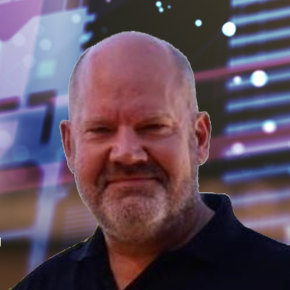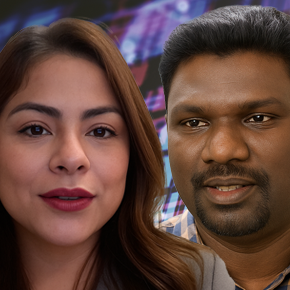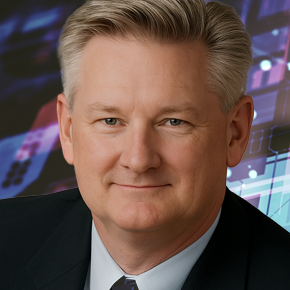January 5, 2023
Sustainable Sourcing

Transcript
The ability to compute and track the real drivers of carbon emissions is allowing companies to track sustainability all throughout their value chain. An early adopter of sustainability insights describes how this has changed his decision-making around sourcing and procurement.
My guest today is the global manager of cost and value engineering for Grundfos, a pump manufacturer seeking to meet the world’s water and energy challenges. Tonni Rasmussen comes from a background working in the renewable energy industry in the areas of global supplier development, procurement engineering, Six Sigma and should-cost analysis. He’s here today to talk about how far the industry has come on sustainability in 2022, and where it’s likely to go in 2023. Tonni Rasmussen, welcome to the podcast.
Tonni Rasmussen: Thank you, Leah. Nice to be here.
What Is Sustainable Sourcing?
Sustainable sourcing is a procurement strategy in which carbon footprint is considered alongside traditional metrics such as profitability and time to market.
Leah Archibald: A lot of folks I talk to about sustainability come from the design background, so they are talking to me about different materials that they can use, or different processes to cut waste in the design process. But there’s also a huge role for sustainability in procurement. I wonder if you could talk a little bit about how the procurement side of the equation plays into the overall sustainability posture of a company.
Tonni Rasmussen: For sure. When we are talking to our suppliers from a sustainability point of view of course we are very much interested to see how can they actually contribute to this reduction. And we cannot lie that we are also sitting in a procurement organization. So, what we’re interested in of course is to lower the prices. At certain level those two actually go completely hand in hand.
Leah Archibald: Do they? Because some people say if you up sustainability, you’re going to up your price.
Tonni Rasmussen: In some cases it will, and in other cases it will not. If we want to reduce a carbon footprint from a supply chain perspective, we are sometimes seeing that we actually need to bring back production to as close as they use it – as close to the assembly factory as possible. And that sometimes means that we’ll need to bring production from APAC back to Europe, which will have a higher cost price but a lower carbon footprint. And that is the dilemma that we see in procurement – that we all of a sudden need to choose between what is actually most important for us: lower price or lower carbon footprint. Because these two sometimes weigh opposite of each other.
Leah Archibald: And are there any times that they go in the same direction that you can lower carbon footprint and lower price at the same time?
Tonni Rasmussen: Typically, when you are within the same region, companies are more or less playing within the regional grid mix. But if you then put in the factor like within the supply chain where you have your transportation, that transportation cost will all of a sudden be the dark horse in your overall calculation. Because that one you need to put on top of your pricing or your estimation of your carbon footprint. And that will at a point challenge what decision you want to go to.
Leah Archibald: Especially as fuel costs go up.
Tonni Rasmussen: Yeah.
Leah Archibald: I imagine part of your calculation is a risk avoidance calculation…
Tonni Rasmussen: Yeah.
Leah Archibald: Because energy in transportation is always changing, the price of that is always fluctuating.
Tonni Rasmussen: Yup. And especially in these times that we see energy in overall are fluctuating quite extreme now. What we saw a couple of years ago, that was within the years, now it’s more or less within the months. So that is definitely something that you need to be on top of because your electricity can go down but then your transportation is going up.
Leah Archibald: So how do you see 2023 being different from 2022? In other words, what have we learned in the past year that we can take into real changes on sustainability in the next year?
Tonni Rasmussen: I think that from next year, we’ll start to see some more maturity coming into our organization on different levels. We are still in I would say, in the very early phases of really taking the carbon footprint agenda into our design phase
Leah Archibald: How do you do that technically speaking? How do you really bring the sustainability insights into your design process?
Tonni Rasmussen: Think it’s kind of the same way on how we did it initially back in the days where we introduced aPriori and we needed to bring in the cost perspective into engineering. Not that they were not familiar with this, but bringing aPriori into that all of a sudden made it much more fact-based. To a level of details which no one was actually used to. Before that everybody was doing their calculation trying to figure out what is the price actually of these different features. But you can ask a bunch of people and they will have probably different opinions about that. And when we were moving into the carbon footprint part of it, the engine was the same. We’re calculating on the same methodology. The currency just changes. Because normally we calculate in US dollars and euro. Now we need to transform the cost it into carbon footprint. So now carbon footprint will be a kind of a new currency.
Leah Archibald: What you’re saying is that there’s not a wholesale difference in terms of the process. Originally, you brought in aPriori to get everyone on the same page of what your components should cost. You brought in some real hard data, so there was no longer any guesswork and your team could run their components through aPriori and get a sense of their true costs. And now you’re using the same aPriori system to calculate the carbon of each of these components. So some of the things will be the same, like if you have a component with a lot of waste metal on it both the price and the carbon footprint will go if you find a different process to use when creating that particular part. But you’re facing this double bottom line right now where it’s not just the cost that you’re paying attention to, it’s also the carbon.
Tonni Rasmussen: Yes, exactly.
Ethical and Sustainable Sourcing
Ethical and sustainable sourcing involves using a double- or triple-bottom-line approach to decide where to source your components.
Leah Archibald: What I want to ask is how do you as an organization decide how to make those tradeoffs? Are you deciding overall this is your cost target, this is your carbon target, and then you’re trading them against each other? Or is it more of a fuzzy learning to grow with this knowledge?
Tonni Rasmussen: I would say, Leah, it’s probably most the last one. You know, everybody knows about the cost. We all should know the weight of $100, €100 and so on. This is something that we can easily understand. We can comprehend it. But we do not know what is the value actually of one ton of carbon. That is still a fluffy number. So, this is definitely something where we as organizations still need to have a feeling of how we go about this. And the reason I’m bringing this up is that we realize that in purchasing, if we have a price of let’s say € from Germany, and we have one ton of carbon footprint, we can get that to half the price in India but with three ton of carbon footprint. Now, if we compare these two, the cost for Grundfos would probably be the same because at a point we need to be taxed on the carbon footprint. But the buying price, the price that we pay is half the price.
Who should make that decision on which of those two supply chains we should go for? Because what we are being measured on in purchasing is the price – only the price. This is what our category management is also being measured on. But Grundfos as a company is being measured also on sustainability. So our initial discussion right now is maybe that we need to escalate if we have a situation like this. We need to escalate that to a higher level in the organization, to actually determine which of those two scenarios to go with. Because it becomes in some ways political and in a way the management needs to decide are there actually customers that want to pay more for that? If we want to go with the expensive supplier with the lowest carbon footprint, that would have impact on the final product so to say.
Leah Archibald: It’s interesting because I think Grundfos is already head and shoulders above other manufacturers by even having a baseline for sustainability and beginning to track it. And even so, there are a lot of thorny questions that you’re getting into about how to make that tradeoff. And you’re ahead of the pack because you can even see that tradeoff because most manufacturers that we’re talking to especially in the US where regulations are a little bit behind the EU, they’re just starting to think about how to get a baseline. They don’t know what their carbon footprint is for different suppliers and different areas. So, I thought we were going to come into this conversation saying Grundfos is a leader and everyone should copy exactly what they do, and I do believe that’s true, but I also see that there’s so much more development to do in 2023 in terms of how to interpret these models. You’ve just got these models. You’ve just got this information, but there’s still an executive question about how to process this information.
Tonni Rasmussen: Yeah. Exactly. How we’re going to cope with all these information? We need to develop our answers to our own questions.
Sustainable Sourcing Strategy
The first step in a sustainable sourcing strategy is having the models in place to accurately assess your carbon footprint.
Leah Archibald: And the bottom line is you have to have these numbers in place to start out with. Otherwise, you can’t make any real decisions. You have to have a solution like aPriori in there where you’re not doing guesswork about your carbon footprint but you’re actually getting real hard data about how much energy you’re using, what your waste material is, how much water you’re using, that you can turn that into a real comprehensive picture of your carbon footprint. And then once you have that, then it’s up to some smart decision makers to decide what is the tradeoff between carbon and dollars.
Tonni Rasmussen: Some of the discussions further down in the organization on my level is: what sources are we using and the common understanding of our internal standards. Because if we can make that foundation internally the further you go up into your organization, if they feel that, we are all talking the same language, we have the same view on resources, it makes it easier for them also.
Leah Archibald: Well, Tonni Rasmussen, thank you so much for joining me on this conversation today. It’s been a pleasure.
Tonni Rasmussen: Me, too. Thank you.







